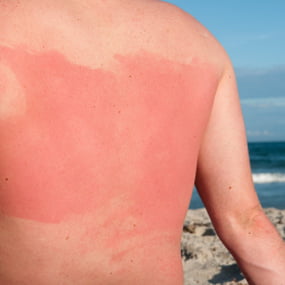Facts About Skin Cancer
- Updated on: Jul 2, 2024
- 2 min Read
Happy Kumari is a dedicated biotechnologist with a strong academic foundation, holding a Master’s in Biotechnology from Amity University, Noida, and a Master’s in Cancer Research and Precision Oncology from the University of Glasgow. Passionate about advancing healthcare through research, she brings expertise in cancer biology to her work. Previously, Happy contributed as a Patent Associate at Effectual Knowledge Services and also served as a Research Analyst with Maxinov Solutions Private Ltd. She is now contributing as a medical content writer for Diseasefix, where she communicates complex scientific topics with clarity. Her research interests focus on pioneering developments in cancer biology and precision oncology.
- Published on Feb 21, 2021

Skin cancer refers to any cancer that begins in your skin. It may develop on any part of your skin and can also spread to other tissues and organs in the body. Skin cancer is the number one cancer diagnosis in the United States, in fact, more common than breast cancer, prostate cancer, and lung cancer combined. Majority of skin cancer cases are caused by damage of skin cells by sun, and therefore are largely preventable.
Worldwide Facts
Here are fast facts and statistics about the skin cancer for a quick review:
ADVERTISEMENT
ADVERTISEMENT
- Skin cancer is the most common cancer in the United States. According to estimates, one in five Americans will develop skin cancer in their lifetime.
- More than 1 million Americans are currently living with melanoma.
- Melanoma rates in the United States doubled from 1982 to 2011.
- Cases of skin cancer are on the rise globally. About 2-3 million non-melanoma skin cancers are diagnosed each year.
- More than 132,000 melanoma skin cancers are diagnosed globally each year.
- Changes in climate are also affecting skin cancer rates globally. More solar UV radiation is reaching the Earth’s surface because of holes in the ozone layer. According to an estimate a 10 percent decrease in ozone levels could potentially lead to an additional 300,000 non-melanoma and 4,500 melanoma cases every year.
- Each year, melanoma treatment for patients aged 65 and older requires about $249 million dollars. The treatment of all melanoma cases in 2010 did cost an estimated about $2.36 billion. The treatment of cancers, no doubt, is costly.
- Basal cell and squamous cell carcinomas are the two most common forms of skin cancer that are highly curable if detected and treated early.
- Most of the skin cancer deaths are from melanoma. On an average, one American dies from melanoma every hour. In 2017, about 9,730 deaths are estimated to occur due to melanoma. Out of them, about 6,380 will be men and 3,350 will be women.
- According to World Health Organization, more than 65,000 people a year die from melanoma globally.
- The biggest risk factor for skin cancers is the exposure to natural and artificial ultraviolet light.
- The American Academy of Dermatology (AAD) recommends people to protect their skin from the sun’s harmful UV rays through shade, wearing protective clothing and using a sunscreen with a Sun Protection Factor of 30 or higher.
Though sun protection is the most important way to prevent skin cancer, it’s not the only cause of the disease. You can still have the cancer where the sun doesn’t shine.
Share this article
ADVERTISEMENT












